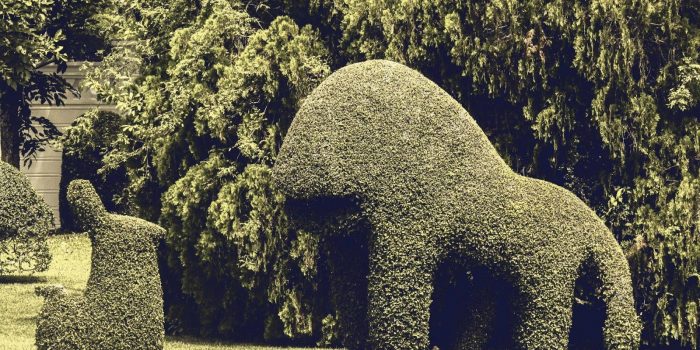For a long time, nature and architecture were at odds. While art often took ideas from nature in shapes, colors, and design, architecture took a step away from this. In the last couple of decades, as cities have grown more sterile and separate from nature, steps have been taken to change that.
The ideas so far haven’t been applicable in every situation, but that might soon change with living art.
What Are Living Sculptures?
Living sculptures are sculptures that are made with living objects, specifically plants. Generally, the plants are still alive, planted throughout the sculpture to give it shape or design. However, recently harvested plants can also be considered living sculptures, at least for a while.
These living sculptures create a mix of art and science and are whimsical and ever-changing. The most common and widely-known type of living sculpture is bushes cut into the shapes of animals, but the trend is growing and becoming more complex.
How Does That Translate Into Homes?
Living sculptures are also becoming more functional. For years, people have theorized how to make homes more a part of nature, from growing gardens on the roof to including open spaces in the center of homes.
Now, the hot topic is living sculptures.
Azulik and Roth Architecture Announces First Residential Living Sculptures
One good example of how living sculptures can change architecture is the new project by Roth Architecture and Azulik. Their new building will be located in Tulum, Quintana Roo, Mexico.
Their project will be a residential complex that puts nature at the forefront of the home by mixing living sculptures and residences. Not only does this mix art and functionality, but nature as well.
Many of them will have actual growing plants, like gardens or creepers, growing around the outside of the home. But nature is usually included inside the home as well, such as natural textiles and flowing shapes that are not often seen in homes but can be found in art and nature worldwide.
Before the living sculpture trend in architecture, there were other ways to make homes feel more connected with nature. Some examples included designing homes from local resources, like stones, caves, or even big trees. The homes can be made from these materials or incorporated throughout the home via natural textiles. This concept can be seen with things like stones in a fireplace, on a table, or tables made from natural wood that was cut down right in the area.
Additionally, having lots of windows makes homes in remote areas feel closer to nature. For example, having a home up on a mountain with lots of windows feels a lot closer to nature than a small cabin with just a couple of tiny windows. That way, those living in the home can often see themselves out in nature and remember where they are.
Matching natural tones throughout the home is also an often-used design. From sticking with greens, browns, beiges, and fall colors, the house feels more closely connected to nature. This method often works best in conjunction with windows, so the colors can be seen inside and out.
On the more off-grid side of home building, we often see homes with greenhouses inside or gardens on the roof. They may be near trees or caves that offer shade. When they are out in the open, many designers prefer to build homes that almost blend into nature, using materials and colors that mix with the landscapes surrounding them.
Living walls are another popular design, which is often a wall of moss and succulent plants right inside the home in a hallway or living room. This is often done in more urban areas where connecting to nature via windows and wide-open natural spaces just isn’t possible.
However, living sculptures offer a new design that can be used pretty much anywhere, in both cities and rural areas and in all sorts of different countries. This may be a way to connect with nature globally and bring cities back into their local natural environment in a way that isn’t intrusive or disruptive.
How Can This Change Architecture in the Future?
This kind of design may offer multiple benefits to the world of architectural design. Not only does it allow nature to combine with cities more by making it prominent in and around homes, but it also offers a way for people to work more with nature.
Traditionally, nature and homes do not do well together. For example, siding can be rotted or pulled loose from a house by vines or creepers. Trees too close to the home can ruin piping or foundation, and houses aren’t often structurally made to handle the heavy weight of a garden on the roof.
However, if we start to focus on houses made to withstand and work with nature, this can make a lot of difference. There wouldn’t be as much need to destroy the land to place residences or buildings, and the yards wouldn’t have to be flat with minimal landscaping. Currently, these homes are only feasible for those in the top income brackets. But hopefully, one day, they will start to trickle down and become more popular.
If you live somewhere like New York, you may not be able to see this complex anytime soon. However, you can explore other examples of living sculptures near you. If you don’t like driving, look at getting a chauffeur service New York and have them take you around the city.
All sorts of sculptures mix the living and the still into one design, from people pretending to be statues in a unique twist of living sculpture to seasonal living sculptures in the shape of pyramids and people.


